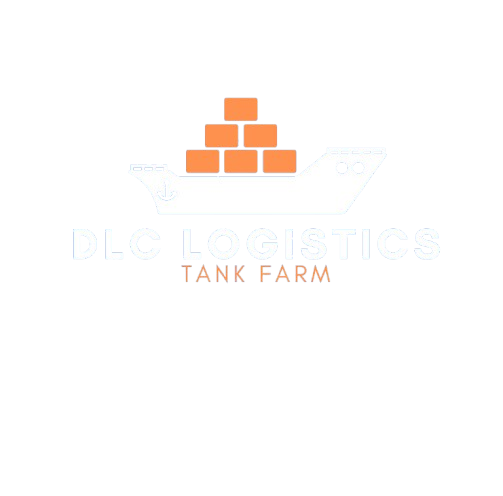Top 10 Oil Producers in the World: 2025 Global Oil Giants Ranked
The global energy landscape is constantly evolving, yet oil remains a dominant force. In 2025, several nations continue to assert themselves as global oil giants, supplying billions of barrels annually to meet industrial, commercial, and domestic energy demands. This article ranks the top oil producers in the world, examining their production capacities, strategic developments, and roles in shaping energy security.
Let’s take a closer look at the top 10 countries fueling the world’s energy future.
1. United States – Unmatched Shale Dominance
The United States maintains its position as the world’s top oil producer. Thanks to advanced hydraulic fracturing and horizontal drilling technologies, U.S. shale production—particularly from the Permian Basin—has skyrocketed. In 2025, daily production remains over 12 million barrels per day.
Beyond quantity, the U.S. oil industry is focusing heavily on carbon reduction, with investments in carbon capture, utilization, and storage (CCUS) technologies, reinforcing its dominance while aligning with sustainability goals.
2. Saudi Arabia – Strategic Control Through Aramco
Saudi Arabia’s oil production is synonymous with Saudi Aramco, the world’s most valuable energy company. Producing approximately 10 million barrels per day, Saudi Arabia remains a central figure in OPEC+, influencing global oil prices.
The kingdom’s Vision 2030 plan includes long-term diversification strategies, but crude oil exports—primarily from the Ghawar field—remain a cornerstone of national revenue.
3. Russia – Resilient Production Amid Sanctions
Despite facing international sanctions, Russia continues to be a top oil producer, delivering around 9.5 million barrels daily in 2025. Much of this output comes from Western Siberian fields and offshore platforms in the Arctic.
Russian energy policy is increasingly pivoting toward Asian markets, especially China and India, to offset limited access to Western buyers.
4. Canada – Oil Sands and Environmental Balance
Canada remains a major oil player thanks to the Alberta oil sands. Producing close to 5 million barrels per day, Canada is committed to responsible resource management and emission reduction strategies.
Recent pipeline expansions, like the Trans Mountain Pipeline, are enhancing Canada’s export capacity to Asia and the Pacific.
5. China – Balancing Import Dependence with Domestic Growth
Though largely reliant on imports, China is boosting domestic production from Daqing and Changqing fields, yielding over 4.5 million barrels per day. The country also holds significant sway over refining capacity, further entrenching its energy influence.
China’s dual focus on increasing energy independence and transitioning to renewables makes it a unique force in global oil markets.
6. Iraq – Rising Despite Infrastructure Challenges
With over 4.4 million barrels per day, Iraq holds the fifth-largest proven oil reserves in the world. While political instability and infrastructure limitations continue to affect operations, foreign investments are helping Iraq modernize its oil sector.
Iraq’s Basra region remains a vital export hub, and the nation plays a significant role in OPEC+ quota decisions.
7. United Arab Emirates – Innovation and Expansion
The UAE, particularly through Abu Dhabi National Oil Company (ADNOC), is ramping up production to 4 million barrels per day. Recent offshore discoveries and new refining ventures are pushing the UAE closer to its 2030 energy ambitions.
The UAE’s efforts in sustainability, including carbon-free oil certification and energy diversification, are positioning it as a forward-thinking oil power.
8. Brazil – Offshore Powerhouse of Latin America
Brazil is now producing more than 3.7 million barrels daily, with most output coming from offshore pre-salt basins. These deepwater reserves have positioned Brazil as Latin America’s top oil producer.
Petrobras, Brazil’s state oil firm, is investing heavily in innovation to increase efficiency and reduce environmental impact in ultra-deep drilling.
9. Iran – Persistent Player Despite Sanctions
Iran produces around 3.5 million barrels per day, and though sanctions restrict exports, the nation continues to maintain and even expand production capacity. Strategic partnerships with China and Russia have helped Iran sustain output levels.
Iran’s National Iranian Oil Company (NIOC) is focusing on reviving aging fields and attracting foreign technology under barter and service contracts.
10. Kuwait – Steady Output and Global Ambitions
Closing the list is Kuwait, producing approximately 2.7 million barrels daily. The country relies on the Burgan Field, the second-largest oil field globally.
Through Kuwait Petroleum Corporation, the nation plans to invest over $100 billion by 2035 to enhance its refining and petrochemical infrastructure.
Global Trends Shaping Oil Production
As we evaluate the top oil producers in 2025, several global trends emerge:
- Energy transition: Nations are increasingly investing in clean technologies alongside fossil fuels.
- Geopolitical shifts: Sanctions, alliances, and global crises significantly influence production patterns.
- Digitalization: AI and IoT are transforming how oil fields are monitored and optimized.
- Decarbonization mandates: Producers are under pressure to meet net-zero targets while maintaining output.
Why Global Rankings Matter
Knowing who the top oil producers are isn’t just trivia—it’s a vital component in understanding global power dynamics, energy pricing, and trade relationships. These nations influence OPEC+ decisions, shape geopolitical strategies, and directly impact the global economy.
Conclusion: Who Leads the Global Oil Game in 2025?
In 2025, the oil production leaderboard remains dominated by a blend of innovation, resources, and geopolitical influence. From the United States’ shale supremacy to Saudi Arabia’s strategic export control, each of these nations plays a pivotal role in fueling the world.
As the world transitions toward greener energy, these producers are not just pumping barrels—they’re evolving policies, adopting new technologies, and redefining energy leadership for decades to come.
Inbound Links
Outbound Links
-
U.S. Energy Information Administration (EIA) – Global oil stats
-
OPEC Official Site – Data from major oil producers
-
International Energy Agency (IEA) – Production forecasts
